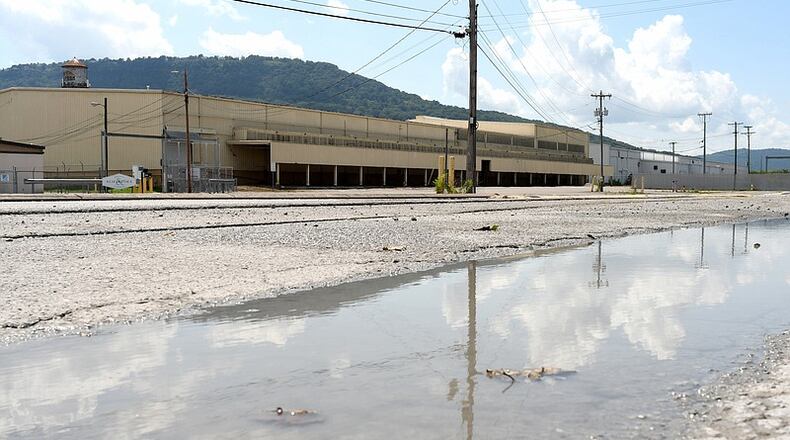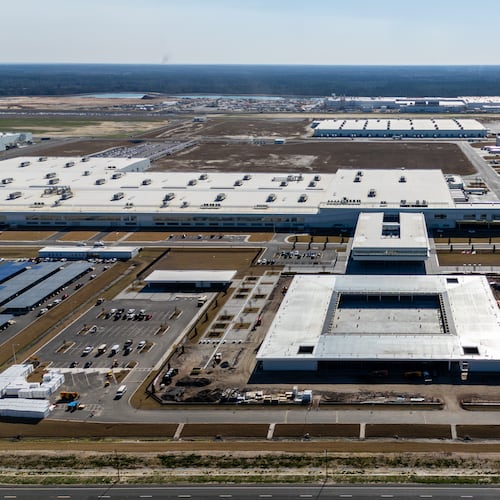In a warming world, the primary concern surrounding climate change is the Earth’s atmosphere trapping the heat of the sun and raising global temperatures, but in a world also rapidly urbanizing, the materials used to build roads, buildings and parking lots also trap that heat, raising local temperatures even higher in the neighborhoods around them.
This phenomenon is called the urban heat island, and its effect in Chattanooga has accelerated over the past four decades as more roads, buildings and parking lots have been built to accommodate a growing city.
Amid a heat wave with thermometers reaching 99 degrees in the city, a recent report from Climate Central found Chattanooga to be the sixth fastest warming city in the country.
In turn, some of that heat is trapped in the concrete, brick, metal and other materials used to build businesses, apartments and houses in the city.
According to research at the University of Tennessee at Chattanooga, surface temperatures in urban neighborhoods like Alton Park and Highland Park and even suburban areas like Gunbarrel and Hixson ranged from 111 to 138 degrees in the summer months from 2014 to 2023.
Erinanne Saffell, an academic at Arizona State University who studies the urban heat island effect, said in a phone interview that the slow release of the heat from these materials poses a concern especially at night.
“During the day, the sunlight goes into the ground. It’s stored in the ground, and then it’s released very slowly at night,” Saffell said. “It’s almost like it becomes a solar oven — the parking lots and the sidewalks and all of those urban materials.”
As that heat releases, it warms the air around it, creating the urban heat island.
Saffell said this effect — which has been identified and studied since the early 1800s — becomes more pronounced as the general population increases.
“That means that there are more buildings,” Saffell said, “which means that you have a bigger impact from the urban heat island.”
Tree canopy
The primary solution to the urban heat island, Saffell said, is putting more trees in highly developed areas as a way to have the shrubbery and greenery absorb the heat.
“That’s absolutely what trees can do,” Saffell said. “If you have an area that has more trees versus an area that has less trees, theory is with fewer trees, it’s going to more than likely be hotter as a consequence.”
According to the research at UTC, areas like Alton Park, Highland Park and downtown — which have less tree canopy than others — suffer more from the urban heat island effect.
The research also found that areas with a lower median income typically have the least amount of tree canopy.
Charlie Mix, geographic information systems director at UTC, said in a phone interview that the research shows there is a problem concerning equity when studying the urban heat island.
“We need to maybe be thinking about ways that we can protect our canopy, so that doesn’t become a large-scope problem for the city — that being what we call tree equity,” Mix said.
Consequences
Rick Bowers, executive director of the local advocacy group Green Spaces, said in a phone interview the urban heat island effect puts a bigger burden on low-income families due to the increased need to run air conditioning at night.
“Higher utility bills for people that are less likely to afford them is the big problem,” Bowers said.
He added that the low amount of tree canopy in some neighborhoods contributes to flooding issues.
“The areas that have been depleted of tree canopy are also more likely to flood and have standing water and thus more property damage potential,” Bowers said.
Bowers said buildings and homes affected by an urban heat island require more maintenance than others.
With the increased demand for air conditioning, Saffell said the urban heat island effect causes more electricity production and more carbon emissions, which is what causes higher global temperatures.
“When you’re cranking your air conditioning on, you’re putting more heat into the atmosphere,” Saffell said.
It’s also a public health concern, she said, especially to those at high risk.
“Maybe they don’t have air conditioning in their house, and they’re not able to cool effectively,” Saffell said. “Your body accumulates heat, and so that next day, you could be more susceptible to a heat-related illness.”
The surface heat itself is also a problem, she said.
“If somebody were to walk with bare feet on that pavement or that parking lot,” Saffell said, “they could have serious damages done to their feet.”
Ongoing efforts
To help address concerns related to urban heat, city government is carrying out initiatives to increase green space in Chattanooga.
Through its parks and outdoors department, the city is hoping to add hundreds of acres of new park space over the coming decades.
In Alton Park, one of the city’s neighborhoods most affected by the urban heat island, the city is working with the Trust for Public Land to build a green way through South Chattanooga, an effort that would add more tree canopy in the area.
A slated revamp of Ross’s Landing, which would add more tree canopy, is scheduled to begin construction late in 2025.
A redesign of the downtown portion of Broad Street would add additional tree canopy as well, but that project is still in development as funding has yet to be secured.
Perhaps the biggest effort from the city to address urban heat is planting more trees in areas affected.
A project called Take Root from 2008 to 2012, headed by the Chattanooga Area Chamber of Commerce, used hundreds of thousands of dollars to plant trees throughout the city.
The Take Root program, now headed by the city, will use a $6 million federal grant, awarded to the city in 2023, to plant trees throughout Chattanooga over the next four years, city spokesperson Eric Holl said in an email.
The name of the program may change, however, once the tree planting begins this winter.
Bowers said he hopes the grant will push the city, once the grant period is over, to create a permanent tree-planting program like those found in other cities like Atlanta, Nashville and Birmingham.
Saffell said planting more trees is the best practice for any city to reduce its urban heat island effect.
“Different places in the city are all getting the same amount of sunlight, right, but then you look at the surfaces and then you look at how much of that sunlight might be getting blocked by trees,” Saffell said. “Some of the factors that can mitigate some of the impacts from the urban heat island are blocking that sunlight in the first place.”
Credit: Chattanooga Times Free Press
Credit: Chattanooga Times Free Press
MEET OUR PARTNER
Today’s story comes from our partner Chattanooga Times Free Press, which serves readers in Southeast Tennessee, Northwest Georgia and Northeast Alabama. Visit them at timesfreepress.com or on Twitter @TimesFreePress.
If you have any feedback or questions about our partnerships, you can contact Senior Manager of Partnerships Nicole Williams via email at nicole.williams@ajc.com.
About the Author
Keep Reading
The Latest
Featured




